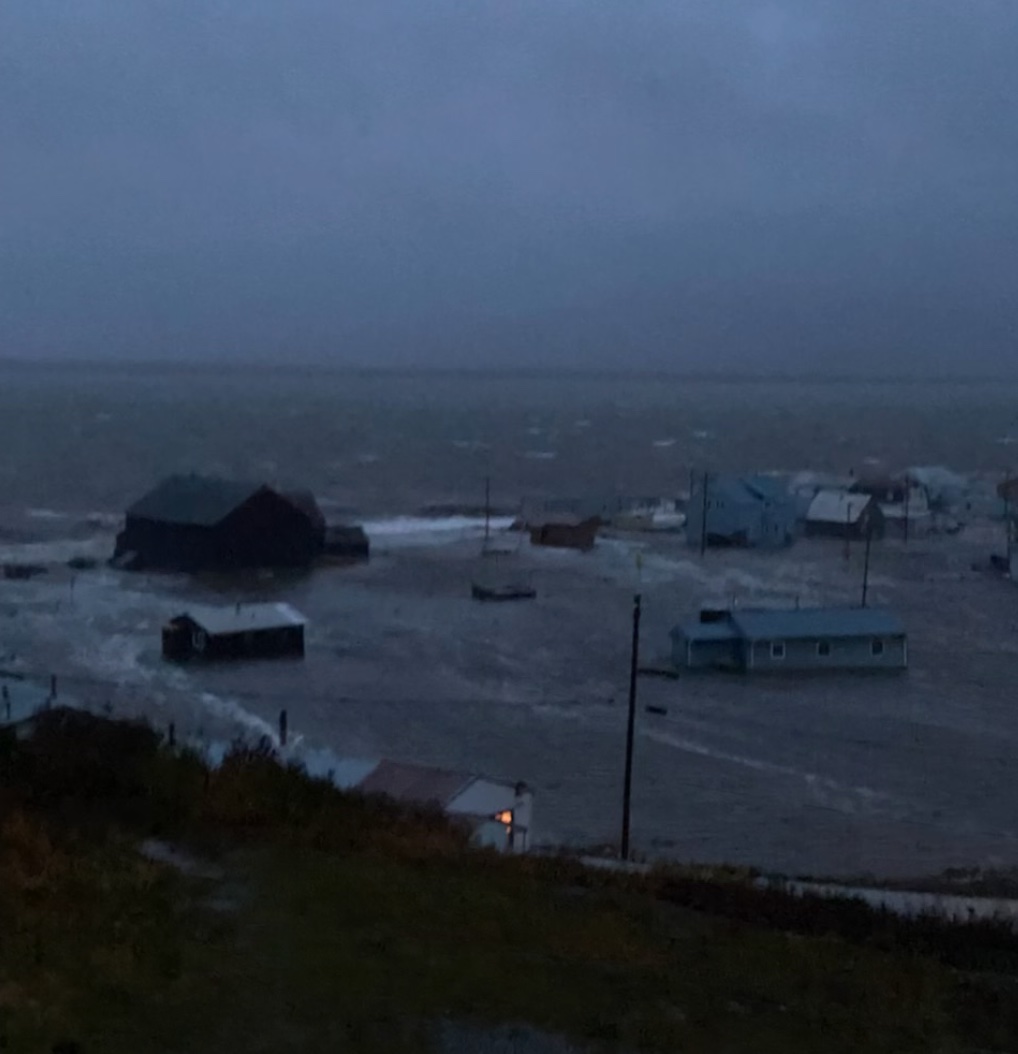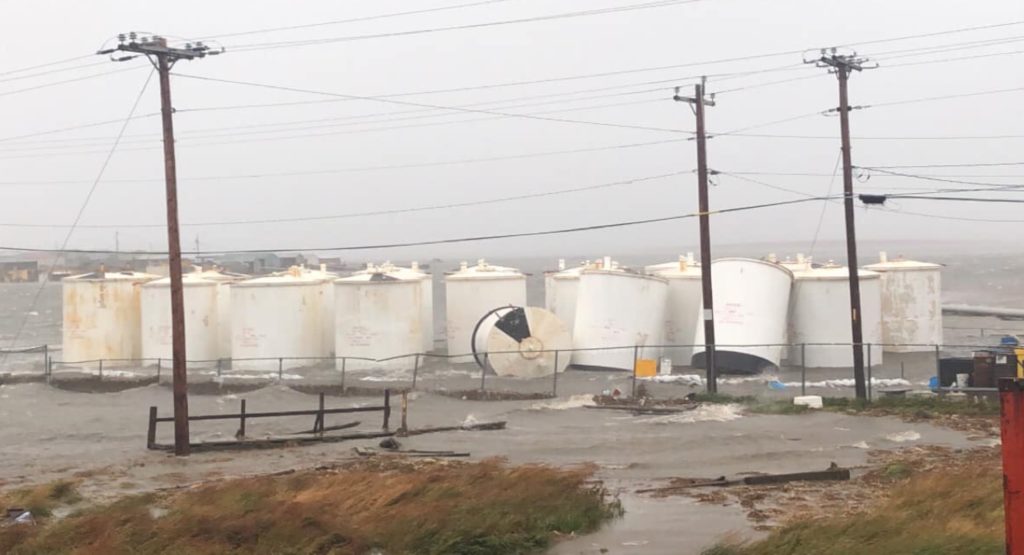Gov. Mike Dunleavy declared on social media a disaster for communities impacted by the huge storm that has hit Western Alaska’s coastal areas.
Dunleavy said the State Emergency Operations Center has received no reports of injuries and will continue to monitor the storm and update Alaskans as much as possible.
Nome webcam images show water pouring out of the foundation of the Nome Visitor Center, as shown above. Homes in Hooper Bay have been knocked off their footings and homes along the waterfront in Nome are now having ocean water running in their crawl spaces.
Water levels in Nome are expected to peak in the afternoon, the National Weather Service said. Ocean levels are at 10.32 feet, which is the highest since the November 1974 flood, according to a Rick Thoman, a climate specialist with Alaska Center for Climate Assessment and Policy.

In Golovin, the water has gone over the berm and major flooding is ongoing in the community, the Weather Service said. Water levels are expected to rise another 1-2 feet Saturday.

In Hooper Bay, massive fuels tanks were floated and left on their sides and some homes are floating away.

There’s a shocker. Alaska gonna be looking for more federal money…
There’s plenty of high ground available to any Alaska community in danger of seasonal flooding. All the state needs to do is legislation for land exchange, for communities and individuals, while condemning the low ground for community or private structures unsuited for seasonal flooding.
New Orleans could have jacked up all their low lying structures and let the silt fill under them during flood stage. New infrastructure could be installed, without having to dig new sewer and other service lines. Just let the silt fill in around them.
I have been asking the same question for years.
Why aren’t you relocating the villages to higher ground? Plenty of ships for delivery of materials, and the Native Corporation (s) can send crew, equipment, and tools, to make it happen. Village by village, until they are settled on higher ground.
It’s happened. Perryville was moved for a volcano. Koliganek moved. Manakotak moved. Others I’m certain
I think it is difficult for people to move from where they have been for so long, but it may become a necessity. The pictures from Nome tear at anyone who follows the Iditarod and loves the Arctic. Glad to see the Gov is on it so quickly. Prayers for their safety and recovery.
Well why can’t they move them further inland, and leave standing houses for harvest or guest cabin? Might be able to turn some into rugged BnB villages. People want to pay for “what it’s like” and visit a village and stay in the coastal houses, let them. They would love the adventure. And pay big bucks for it. Revenues for the villages.
While were at it let’s declare this governor as a disaster as well